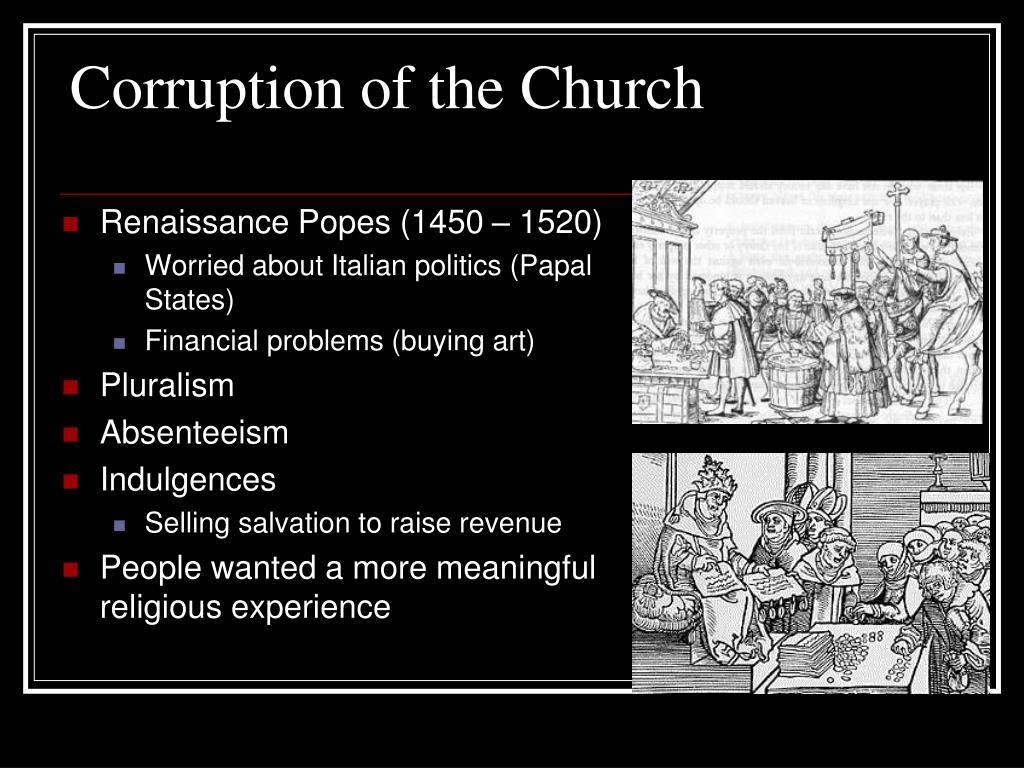Church Corruption in the Middle Ages
As church and state became increasingly intertwined during the period of the Holy Roman Empire, there was no need for a ministry grounded in the word of God, no real sense of mission or evangelism. By the late fifteenth-century, everyone was presumed to be a Christian, so there was no need to evangelize at all.
Common people rarely liked the clergy at the time due to their secular advantages and disregard for Christian values. They were exempt from taxation and compulsory military service. They earned their living by the tithes of the community, but often did little to deserve it. Above all, they were not well informed, and they were not seen to play any decisive or important role in the life of the church.
Despite the requirement of celibacy, in most times and places, they had a wife (or a concubine) and children of their own. Bishops rarely made attempts to curb the practice and frequently had concubines of their own. The practice was so widespread that some dioceses imposed a tax on priests with wives and children.
Nepotism (the practice of giving jobs to family, friends, and supporter), pluralism (holding multiple ecclesiastic offices with income for greater income) and simony was rampant. Absenteeism – failure to make any effort to perform their liturgical issues – was common. However, it was the selling of indulgences that finally triggered rebellion.
“When the coin in the coffer rings, a soul from purgatory springs.”
In other words, by paying a sum of money, a mother, father, or other person will be delivered from purgatory and any torment they might be experiencing after death and safely enter through the pearly gates.
Corruption of the Church

